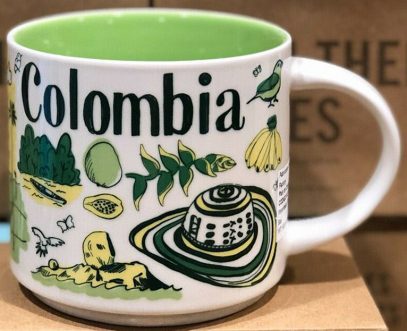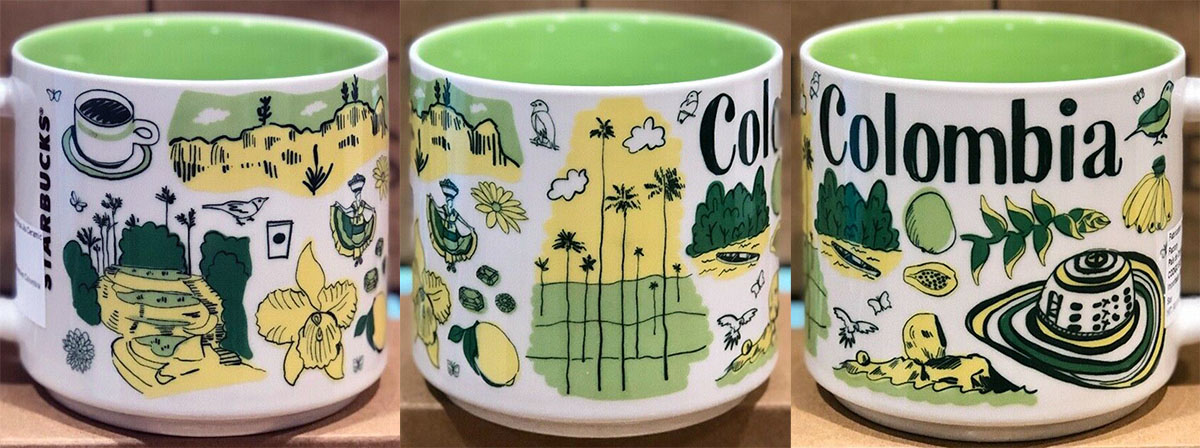
Been There – Colombia
I am wrapping up Colombian BT mugs with Starbucks Been There – Colombia. It has a distinctive design with green and yellow colors.
– The huge hat on the front of the mug is Sombrero Vueltiao, which literally translates as “turned hat”. It is a traditional Colombian headwear made from caña flecha, a type of cane that grows in the country. The production of the hat is a pretty long process and might take days or weeks. The strips of cane have to be dried and prepared in a way that they look uniform and can be easily bent. Some of the strips have to be soaked in black paint (usually of plant origin) and then dried too. Using strips of light and dark shades, the craftsman can create different patterns that make the hat unique.
– Cocora Valley is a part of the Los Nevados National Natural Park and is well known as the major location of the national tree and symbol of Colombia, the Quindío wax palm. These palms can grow to a height of 150ft and in some cases even 200ft. When walking among these slender trees you are going to be blown away by the feeling of being on another planet or in a fiction world. In other words, it’s a must-see when visiting Colombia, something that could not be replaced by watching a video or seeing pictures of it.
– Orchid Cattleya Trianae is the national flower of Colombia. It was chosen by the Colombian Academy of History as the most representative flowering plant of Colombia.
– Colombian emeralds account for 70-90% of the world’s emerald market. Emerald gemstones were considered as one of the world’s most valuable jewels for many thousand years. No surprise the mining sector is attracting many and sometimes it leads to violent conflicts. This is the sad part of this industry.
– And last but not least, is the Colombian Coffee, which is sometimes considered the best in the world. Why so? There are several factors that make it special:
- Geography and climate: the Colombian coffee region has probably the perfect location and weather conditions for growing coffee with just about right amount of sun, rain, and minerals in soil.
- Growing and collecting methods with handpicking
- The type of coffee – Colombia is one of the few countries that produce 100% arabica beans. It means sweeter and lighter taste with less caffeine
And to add more on the region where most of the Colombian coffee is grown: is it called the Coffee Triangle and consist of the three departments of Quindio, Caldas and Risaralda. The biggest towns are Armenia, Manizales, and Pereira, which form the triangle, hence the name of the region. There are many tours available which allow you to learn more about coffee history, see how it is being produced and simply admire the beautiful nature of this region.























































































